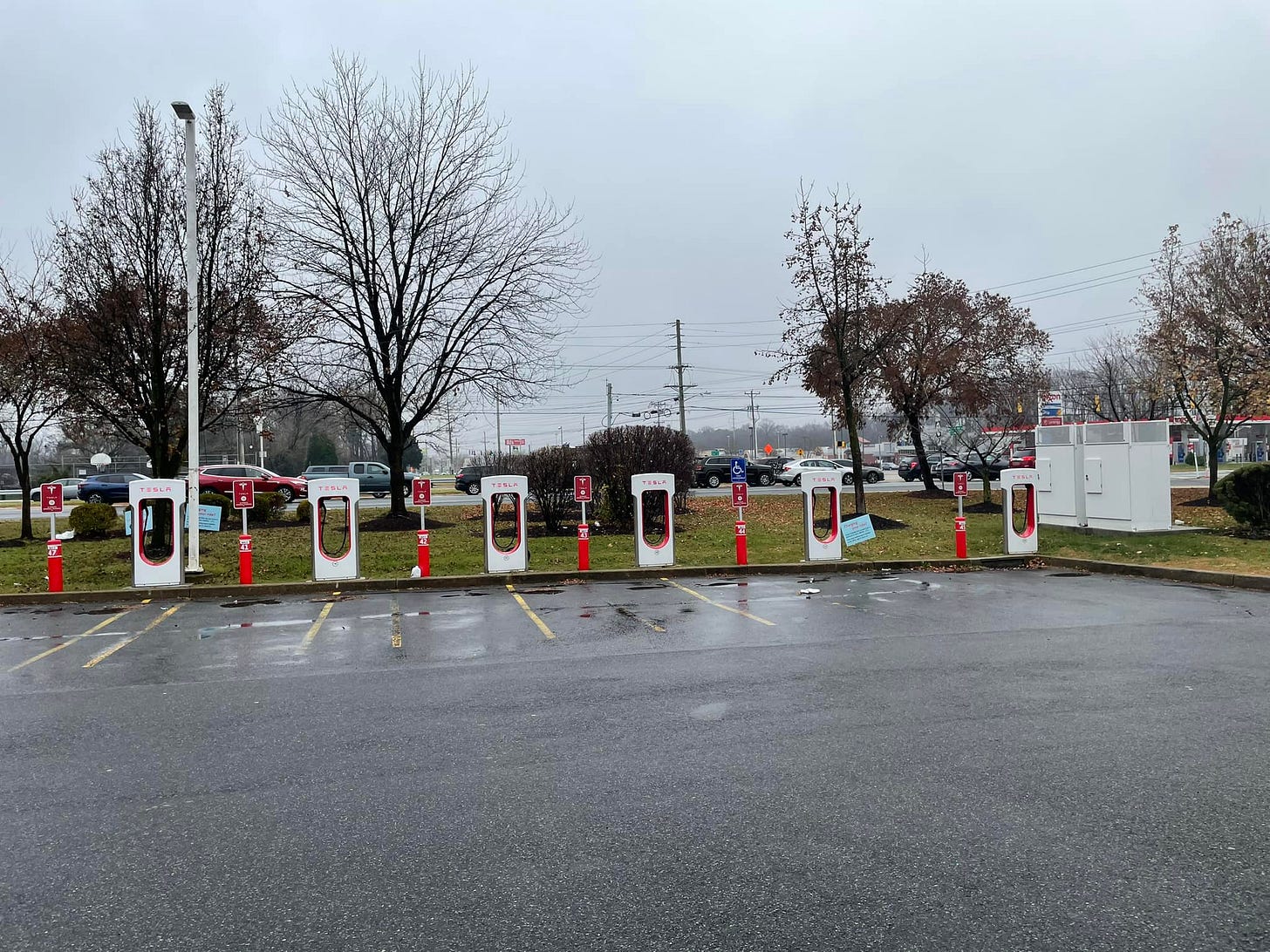A regulation is just a thumb on the scale
And every one creates at least one winner and loser.

Recently my home state of Delaware followed the lead of several other benighted states and decided that the purchase of electric cars should be encouraged in the name of fighting climate change, this despite the fact that over 90% of the public comment was negative about the idea. However, this is simply an outgrowth of a decision made legislatively a few years ago, when they decided to follow California emission standards. The issue should have become moot when a Delaware General Assembly revamped into sanity and governor who listens to the people and not manufactured hype repealed that law, but it didn’t.
As I said in the subhead, every regulation creates at least one winner and loser. In this case, the winners were the state of California and a batch of nameless federal pencil-pushers: essentially, by the EPA creating a carveout to the otherwise blanket Clean Air Act way back in 1975 so the state of California could have have more stringent restrictions, they set the stage for states to give up their natural advantages because they had what the EPA calls “non-attainment areas” for pollution when Congress revised the CAA in 1990. Delaware made that fateful decision in 2010, simply because New Castle County was considered part of a “non-attainment area” that also included portions of Maryland, Pennsylvania and New Jersey (based in Philadelphia.) In other words, New Castle may have been in compliance but could have been dragged down by other areas in this arbitrary metro region.
On the other hand, the list of losers is long. Certainly there was merit to cutting the amount of air pollution, but the results of previous regulation had brought us to the point where we have significantly reduced the amount of air pollution a single car creates - it’s just that we have more cars on the road as population expands. But because we have essentially squeezed out the more easily attainable pollution cuts from the internal combustion engine, environmentalists figure the next logical step is a zero-emission vehicle, even if it means a loss of freedom. (That may be a feature and not a bug to some.)
The next group of losers is Delaware car dealers, whose peers around the nation are already complaining that electric cars aren’t selling. If this keeps up over the next decade, there will simply be fewer car dealers. We’re already long removed from the era where every small town had either a GM or Ford dealer (and the bigger towns had both, along with a Chrysler outlet and the random AMC dealer) but the lack of individual dealers is already apparent in our area. For example, while most makes can be secured in the Salisbury area, it has just three dealer groups IIRC. Most of the makes are sold by one dealer in five different buldings along a strip of North Salisbury Boulevard, which is part of this dealership’s multistate chain. (There used to be a second, local dealer along that stretch of road but they were bought out by another chain that was quickly swallowed up by the behemoth.) The only “independent” I’m aware of is a small Subaru dealer that took over the old Saturn dealership on the outskirts of town when it closed shop. As a Toyota loyalist who doesn’t like the local dealer, I had to drive almost to Virginia to find my truck.
Another in the group of losers are Delaware electric customers, as I’m sure neither Delmarva Power or Delaware Electric Cooperative is ready for a mass influx of home chargers. With more demand, it’s certain that supply prices will increase regardless of whether we get “free” electricity from sunshine and wind or not.
If all goes as planned, the scene in Delaware may eventually resemble that of Castro-era Cuba. But instead of cars straight out of the 1950s, we’ll be driving around ancient autos from the teens and twenties, looking around for precious gas stations. While government is bending over backward to make sure there are charging units at every service station - despite the fact the government hasn’t built a single one yet - something tells me they won’t be as accommodating for those who want to keep their ICE cars.
Finally, when I saw the photo above I shared it with the caption, “The Biden pump: something we never needed until he came along that doesn't work half the time and is slow and inefficient when it does.” I put gas in my truck the other day and was in and out in 10 minutes (and I had that sucker about dry.) Unfortunately, charging a car is like charging a phone: a time-consuming process. Perhaps the situation will improve with technology, but we had a pretty good system in place that no one needed to mess with.
I’m one of those who equate cars with freedom to travel. This thumb on the regulatory scale threatens that freedom, so we should be using any and all (legal) means to eliminate the threat.
Until next time, remember you can Buy Me a Coffee since I have a page there.





Good eye. Notice no cars The crazies are certainly getting their way. I think I read that one of these stations going full blast takes ad much energy as 280 HOMES! The grid is already outdated and overloaded!
Glad to know unwoke folk like you.